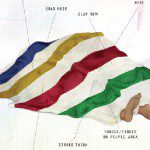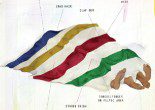A dull read
Sharp's John McGouran and Michael La Fave say they want to produce a magazine of GQ and Esquire quality, but is it really more than a catalogue of pricey boy toys?
It’s the September launch party for Sharp magazine’s Book for Men, a hardcover offshoot filled with glossy images of luxurious cars, men’s fashion, and exotic destinations. The ballroom at the new Shangri-La Hotel in downtown Toronto is crowded, lit with purple lights, and filled with loud music playing—a little reminiscent of a nightclub. The male guests are all carbon copies of one another: handsome, impeccably dressed in suits, and seemingly successful. They are the men Sharp wants reading its magazine, and the men Sharp’s advertisers want to reach.
Some of those advertisers are at the party. Near the back of the room, in an area dubbed the Editor’s Lounge, there are displays of luxurious Chanel and IWC watches, and bespoke shoes from Treccani Milano. There are also complimentary shoeshines from Walter’s Shoe Care and hand massages from American Crew. Nearby is a bar stocked with drinks courtesy of Glenlivet, Absolut Elyx, Peroni, and Havana Club.
“It’s the one event where Sharp brings everything we think men are interested in to the men we want,” says the magazine’s editor-in-chief, Jeremy Freed. The coffee-table Book for Men is a biannual publication, one of Sharp’s newer projects under the aegis of parent company Contempo Media. Contempo’s founders, publisher John McGouran and editorial and creative director Michael La Fave, had the idea for the oversized book when they first launched Sharp five years ago, but decided to wait a few years before starting it in 2010. “When you launch those things,” says McGouran, “they’re very expensive and probably won’t make money on the first issue, and it did not.” But it is meant to take Sharp to greater heights, he says. “We wanted that kind of product out there so that people know, Hey, these guys are very serious about what they’re doing and that they have the capability. If there’s one point I would look to that kind of really jumpstarted our fortunes, [it] was when we launched that.”
The Book for Men is sold for $16.95 on newsstands, with total sales amounting to about 9,500 copies, and roughly 10,000 copies are distributed at special events throughout the year. A portion of the leftovers that don’t sell on newsstands (around 10,000 copies) is used for other events and specialized distribution. Readers will sometimes order the book through the magazine’s website; about 7,000 are purchased by companies in bulk to use as handouts. “Sometimes it’s a premium to their customers because it’s a prestigious product,” says McGouran.
The Fall/Winter 2012 edition of The Book for Men is essentially a 268-page guide to the hottest men’s fashion trends and products, including a 32-page “MANual” full of how-to pieces on etiquette, health, travel, and even survival. The content is not far from what can be found in Sharp itself, which is also home to style and grooming manuals.
Flip through any issue of Sharp and you’ll see fashion layouts, service pieces, and plenty of product write-ups. While there are celebrity profiles, travel stories, and car reviews, most of the editorial focuses on Sharp’s idea of the best of what’s out there. “It’s almost like it’s glorified advertising in a way,” says Chris Lachine, a Toronto-based painter and Sharp reader.
Still, Sharp has a great reputation among Canadian men who appreciate the lavish lifestyle, maintains Rob Cribb, a Toronto Star investigative reporter and former columnist. Sharp is smart, he adds, because there’s a sensibility that it’s been able to capture.
Since launching in April 2008, Sharp has courted affluent men aged 25 to 54—and those who aspire to join those ranks—and it’s been able to stay in business in a men’s market where other efforts have failed. The most recent Winter issue is Sharp’s biggest so far—198 pages of editorial and ads, plus an insert of Time & Style, a watch magazine, well up from the 130-page average.
Published six times a year, Sharp is distributed through the National Post in Toronto, the Vancouver Sun, the Calgary Herald, and The Gazette in Montreal (a total of 100,000 copies), as well as through events (10,000), newsstands (20,000 to 30,000, with a cover price of $5.95), and subscriptions (2,500). Copies are also supplied to Air Canada Maple Leaf lounges and VIA Rail Canada, and mailed directly to members of the Cambridge Club health club chain in Toronto and Montreal. Though a majority of its circulation of 146,500 is controlled distribution, Sharp’s subscriptions are increasing, says McGouran. And in 2011, the title landed just outside of Masthead Online’s ranking of the top 50 Canadian magazines according to total revenue, chalking up an estimated $2.3 million.
Much of Sharp’s content is similar to that of other men’s lifestyle publications, such as GQ and Esquire—in theory, at least. Certainly it aspires to be as good as, if not better than, those titles, and thinks it fares well against them. “You can take our products for the year 2012, six issues of Sharp and two issues of The Book for Men, and compare those to any leading men’s lifestyle magazine and say, Hey, this is on par with them in terms of quality,” says McGouran.
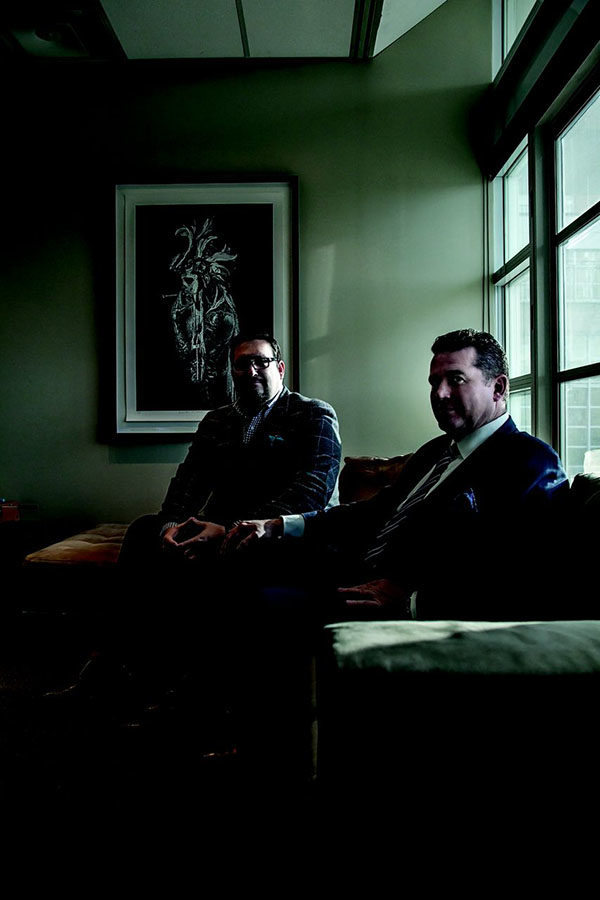 But is Sharp really as good as it claims? Does it have the same quality and scope of content that GQ and Esquire offer? Or is it more focused on landing advertisers than serving readers with the best editorial possible?
But is Sharp really as good as it claims? Does it have the same quality and scope of content that GQ and Esquire offer? Or is it more focused on landing advertisers than serving readers with the best editorial possible?
For a company that touts the look of its magazine, Contempo Media’s head office—on Queen’s Quay West near Spadina Avenue in Toronto—is surprisingly plain. There are off-white walls, black shelves separating desks, and a lone bookshelf holding other publications used for inspiration, but not much else. La Fave’s office is similarly low key. His inner sanctum has few decorations, other than some items from PR companies. His desk features no photograph of his wife and son; there is only a computer monitor beside his MacBook, an empty glass, loose paper, and a copy of British GQ’s October 2012 issue. “In our opinion, the world’s standard for a men’s magazine is British GQ,” says La Fave. “This is obviously the pinnacle. That’s what we aspire to.” Though he seems private about most things, La Fave is honest and open about this goal. He knows men’s lifestyle magazines like Sharp need to be just as good as GQ and Esquire to compete.
Few, if any, would disagree that those two titles are the big dogs in the men’s lifestyle market. Both award-winning magazines have a good mix of celebrity news, serious journalism, fashion, service pieces, product reviews, and literature. As David Granger, editor of Esquire, told The New York Timesin 2004, “Men have range! There’s no man interested only in sports, only in women, only in electronics.” GQ and Esquire balance the different things men are interested in. Take Esquire’s November 2012 issue, for instance. Inside, there’s a feature on the presidential election, while a topless Mila Kunis adorns the cover.
As for GQ, it serves a younger demographic (the average reader is 34 years old; Esquire’s is 44), yet also offers serious narrative journalism. Even its reputation as a fashion magazine hasn’t stopped the editors from publishing excellent writing and earning multiple U.S. National Magazine Awards nominations and prizes in the feature writing and reporting categories. “It’s an important part of the editorial identity of those big American magazines,” says Cribb, “and frankly, it brings a level of credibility that I think Sharp doesn’t have journalistically.”
For his part, McGouran says he’s subscribed to GQ since he was 18, so starting a men’s lifestyle magazine was not so far-fetched for him. Prior to co-founding Sharp, he worked as the director of advertising and sales at Hockey News for five years, and later as the director of sales at Quebec-based Auto Journal Group, which published Motomag, Automag, Auto Journal, Québec Tuning, Auto Passion, and, starting in 2004, Driven. It was at Auto Journal Group that he first got to know La Fave, who would become Driven’s editor-in-chief.
It was actually La Fave who first approached Michel Crépault, the owner of the Auto Journal Group, in 2003, Crépault says, with the idea of starting a Toronto-based men’s lifestyle magazine with an automotive core. “He told me more, and quickly I said yes, because lifestyle was definitely in my court,” says Crépault in his thick Québécois accent. “Also, starting in Toronto was an interesting challenge for me, so I said yes.”
The now-defunct Driven was published six times a year and distributed through The Globe and Mail. Crépault appointed McGouran—someone he describes as the best sales guy he’s ever met—as the magazine’s director of sales. La Fave’s previous business partner and friend, Laurance Yap, became the artistic director, and with McGouran they made up the core of Driven, which at the time had a staff of about six people.
In mid-January 2008, the Auto Journal Group faced challenges—namely, the recession and the crippled automotive sector. But Crépault would come across even tougher times. The core team of McGouran, La Fave, and Yap was leaving Driven, and tendered their resignations, effective immediately. “I was in despair,” says Crépault. Almost four years after the fact, you can still hear the grief in his voice. “I was completely taken by surprise.” There was no explanation provided for the departure, not that one was needed to make sense of the situation. “I knew that if they were leaving together it was definitely to start something,” says Crépault.
“In hindsight, it’s clear the reason they left,” says Johnny Lucas, who took over as editor-in-chief of Driven the week after La Fave departed. “They wanted to do their own thing. I just thought the way it was done was not my idea of what was proper.”
Crépault says he sent McGouran a letter in 2010, about a year and a half after Driven and the Auto Journal Group folded, saying he finally understood why McGouran had left, although McGouran denies receiving it. In 2007, a marketing consultant from the Auto Journal Group advised Crépault to hire a director of sales for all the magazines the company published. McGouran wanted the position, and while Crépault thought highly of him, he didn’t feel he was right for the job—he didn’t speak French (Driven was the only English magazine in the group), and he didn’t live in Montreal. “I understand that he was, rightly so, disappointed,” says Crépault. “Maybe pissed off. Maybe at the time that was the button I pushed, without realizing it, that contributed to the three of them leaving.”
As for La Fave, Crépault says he could always sense he wanted to do something bigger, and he kept his door open for him. “But unfortunately, he took his decision without talking to me first, the way I would have wished that things could have happened.”
McGouran and La Fave simply say they left Driven, and took Yap with them, because they wanted to go in a different direction from where the magazine was heading. Both men wanted to start a Canadian-made publication modeled on GQ and Esquire—something they thought was missing in the market.Sharp would grow out of ideas discussed over a casual lunch at Vox on Adelaide Street East in Toronto—although they didn’t meet with that purpose in mind. “It was fate,” says McGouran. They launched Sharp four months later, after starting Contempo Media, which now also publishes the custom magazines Volkswagen, Audi, Time & Style, S/Style & Fashion, and M/Men of Style.
Fate aside, some questioned the pair’s decision to launch a men’s lifestyle magazine, especially in the heat of the recession. “I don’t know that anybody thought it was going to be an easy ride for them,” says the Star’s Cribb. Canadian men’s general-interest magazines have struggled to stay afloat over the past decade—Toro folded in 2007 after just under four years in print, followed by Driven. According to Toro’s former editor, Derek Finkle, the pool of potential advertisers was shallow, especially compared to what was available south of the border. Then with the recession in 2008, advertising dollars overall were down. Any magazine that didn’t have deep enough pockets to help ride it out until things improved was in trouble.
Were McGouran and La Fave concerned about this? They funded Sharp with their own money, so they were taking a big risk. “Absolutely,” says McGouran. “Sleepless nights. But at that point there was no turning back. It’s sort of like swimming halfway across the lake and saying, ‘Oh, I can’t make it, I better turn around.’ That was never really an option. We just had to find a way.”
A large part of that way was to concentrate on fashion. Indeed, Sharp has been able to attract male readers with its heavy fashion content, largely thanks to a growing interest in the subject. Simply, men are no longer as diffident as they were in the past about grooming and style. “Men have always cared,” says Henry Navarro Delgado, an assistant professor at Ryerson University’s School of Fashion. “It’s just a matter of publicizing that care.”
Enter Sharp, whose readers say they look to the magazine for style advice and ideas. “I would say that I wasn’t [a fashionable man],” says Ira Brenton, a business manager and reader of Sharp, “but I’m making more of an attempt right now, and Sharp is a good tool.” The accessibility of the brands and products featured in the publication has also helped build readership. “I know it’s Canadian,” observes Brenton, “so I know that a lot of the stuff will be Canadian-centric.”
But simply offering Canadian content may not be enough. “You can’t rely on that because I’m not sure enough people care,” says Finkle, adding that magazines need to offer comparable editorial to what can be found in the big men’s publications.
Back in 2008, Sharp’s inaugural issue featured Leo Rautins, a former Canadian basketball player and head coach of the Canadian men’s national basketball team—a national celebrity, but certainly not a George Clooney, Denzel Washington, or Leonardo DiCaprio, the Hollywood stars who would appear on subsequent covers. While products and style guides were evident in early issues, there were also full-length features covering such topics as child soldiers, counterfeit fashion, brain injuries, and the Beijing Olympics. Today, however, long-form investigative features in the magazine are scarce. While Finkle says he thinks Sharp has improved and has made genuine attempts in the past, he does wish it had “more stuff to read.”
Nonetheless, La Fave says the magazine has done well over the years. “We’ve had a number of pieces that I’m very proud of and that I think are definitely noteworthy,” he says. He’s entered features, such as the brain injury story, into the National Magazine Awards, albeit without success. “To not even receive a nomination had us wondering, Are we on the outside of this community or something?” La Fave says Sharp would love to publish stories that could be picked up by CBC. They’re on the lookout for great writers, he says, and want to make more space for features. They also recently commissioned award-winning writer Shaughnessy Bishop-Stall to contribute a fatherhood column. But, La Fave adds, with a hint of uncertainty in his voice, “A lot of the things we’ve done haven’t necessarily attracted attention within the writing community. Perhaps it’s just a case of Canada. Perhaps people are more inclined to go to Maclean’s or someone else with those types of stories.”
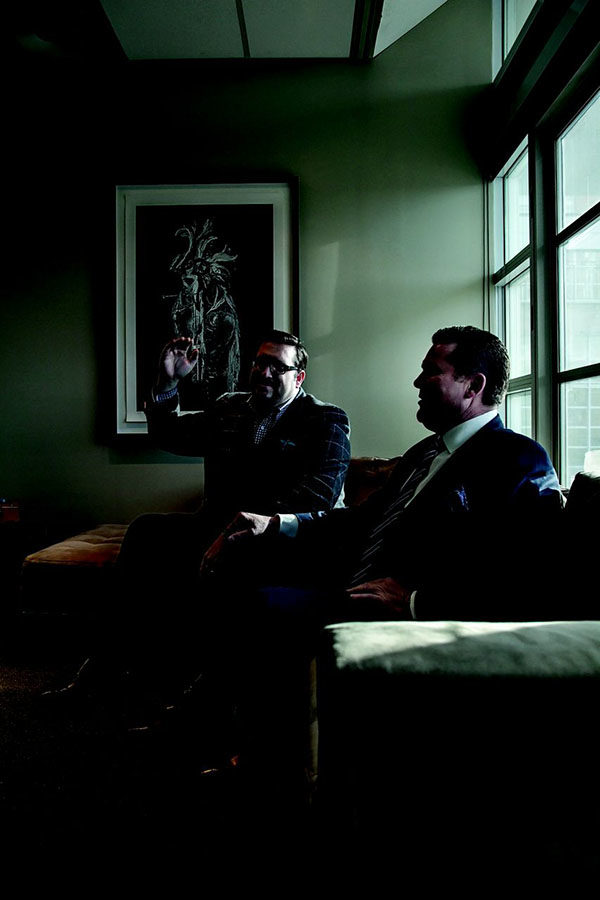 Certainly that wasn’t the case with Toro, which leaned heavily toward strong magazine journalism. The men’s lifestyle glossy was generally well regarded by readers and the industry, and was a frequent National Magazine Awards nominee—and winner. The content was witty, honest, intelligent without being overly intellectual, and at times unabashedly sexual. In one issue, you could read a serious, long-form feature on the Canadian Mafia and then a more humourous piece on the 24 pick-up lines that never work. While not all were award-winning articles, they sparked conversations. “If you went into a news meeting after Toro would come out,” says Cribb, “inevitably, somebody would say, ‘Hey, did you see that piece in Toro?’”
Certainly that wasn’t the case with Toro, which leaned heavily toward strong magazine journalism. The men’s lifestyle glossy was generally well regarded by readers and the industry, and was a frequent National Magazine Awards nominee—and winner. The content was witty, honest, intelligent without being overly intellectual, and at times unabashedly sexual. In one issue, you could read a serious, long-form feature on the Canadian Mafia and then a more humourous piece on the 24 pick-up lines that never work. While not all were award-winning articles, they sparked conversations. “If you went into a news meeting after Toro would come out,” says Cribb, “inevitably, somebody would say, ‘Hey, did you see that piece in Toro?’”
Sharp sparks a different kind of conversation. The publication does a great job of capturing the lighter side of the market, says Cribb, but adds, “I worry a little bit about the relationship with the advertisers and to what extent editorial is influenced by advertising.” In its September 2012 issue, Sharp ran a feature titled “Sharp’s Guide to Effortless Italian Style,” with ads from the Italian brewer Peroni. The fashion spread, shot on location in Italy, included a photograph that showed models drinking Peroni’s Nastro Azzurro beer. “We were in Italy and we thought it was appropriate to have Peroni there,” explains La Fave flatly.
The separation of editorial and advertising has long been a concern for editors, and it’s becoming increasingly difficult to uphold as advertisers make greater demands for reader engagement. But the advertising-editorial guidelines, created by a Magazines Canada task force to help editors, publishers, and advertisers maintain a distinction between editorial and ads, state: “Advertisements should not be placed immediately before, within or immediately after editorial content that includes mention of the advertised products or services. Exceptions are allowed for listings and contests.” So, was Sharp’s piece about Italian style more advertorial than actual editorial?
Other conversations have revolved around the ads on Sharp’s covers. In the April 2010 issue, an Audi ad was visible beneath a transparent plastic cover. Some argue this contravened one of the magazine industry’s key guidelines: “No advertisement may be promoted on the cover of the magazine or included in the editorial table of contents, unless it involves an editorially directed contest, promotion or sponsored one-off editorial extra.” Then in the September 2011 issue, there was a BMW ad that incorporated cover flaps that revealed the company’s tagline “Shape the Future”—one flap turned theSharp nameplate into “Shape” while the other revealed “the Future.” Again, Sharp arguably contravened the guidelines.
But Todd Latham, publisher of ReNew Canada, says the ethics of such covers are debatable. “It depends on how it’s done,” he says. As with other publishers and editors, he suggests the lines of editorial and advertising are blurred only when the ad is directly on the cover; flaps and gatefolds are similar to ads on the back of the cover, so those are okay. Consider: Cottage Life has published a “peel and reveal” cover featuring Corona beer andMaclean’s featured a “trapdoor” ad for the Audi Q5 on its cover.
Still, D.B. Scott, president of Impresa Communications Ltd., a magazine industry consultancy firm, says covers should not include ads, referring to such “flapvertising” as gimmicks. “It sends the message that everything in the magazine, including its brand and its cover, is a commodity and it’s for sale,” he says.
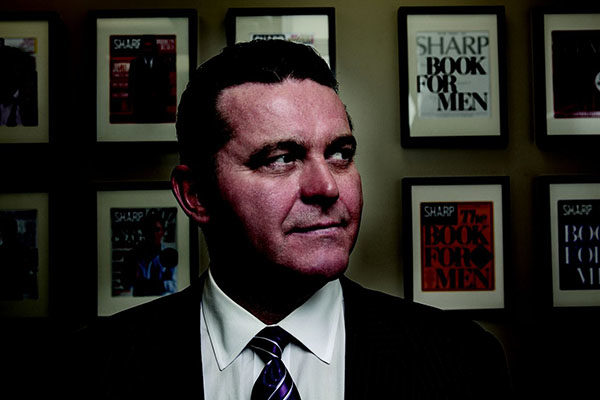 So, is Sharp more focused on landing advertisers than building its readership? A source close to the magazine says he worries that sometimes it “doesn’t care enough about the reader” and it’s concerned “more about creating that beautiful environment and creating a nice premium package.”
So, is Sharp more focused on landing advertisers than building its readership? A source close to the magazine says he worries that sometimes it “doesn’t care enough about the reader” and it’s concerned “more about creating that beautiful environment and creating a nice premium package.”
As Sharp marks its fifth year in the market, the questions are beginning to pile up. Will it finally win a National Magazine Award in something other than the beauty category (Sharp won gold for “Fragrances,” a visual spread that ran in the Fall/Winter 2011 Book for Men)? Will it once again give readers more than a look at the best new suits and manly gizmos? And will Canadians ever recognize Sharp in the same way they do GQ or Esquire?
On the cover of the December/January issue, Ryan Gosling wears a red lumberjack jacket and holds a flaming bottle. Across the page, in bold letters: “Ryan Gosling Is a Better Man Than We Are (and We’re Okay with That).” Would Sharp say the same if it were comparing itself to the heavyweights in the American men’s lifestyle market? More likely it would say, “GQ Is No Better Than We Are.” But to convince some industry observers of that, Sharp clearly still has some work to do. “It’s a catalogue of things to buy,” concludes Johnny Lucas, La Fave’s successor at Driven. “Is that a magazine? Meh.”
Photographs by Darrin Klimek
Karizza Sanchez was the Front of Book/Back of Book Editor for the Summer 2013 issue of the Ryerson Review of Journalism.



